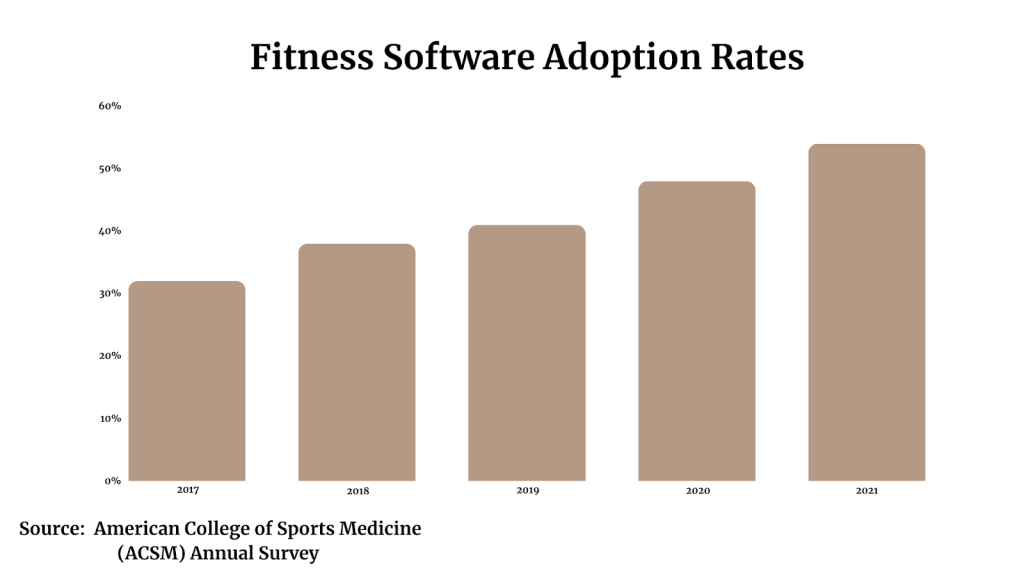Fitness therapy has emerged as a powerful component of holistic wellness practices. By developing personalized exercise prescriptions, fitness therapy practitioners help clients improve physical health, boost mental well-being, and enhance quality of life. However, running an efficient and impactful fitness therapy program presents immense administrative and operational challenges. This is where fitness management software comes in – optimizing workflows, engaging clients, and enabling practitioners to improve outcomes.
In this guide, we explore the multifaceted value of fitness therapy, the common challenges practitioners encounter, how software mitigates these issues, real-world instances of software success, and effective strategies for implementation. Let’s embark on this journey towards a more streamlined and effective fitness therapy practice.
Table of Contents
I. Understanding Fitness Therapy and Wellness
Fitness therapy goes beyond generalized exercise recommendations to create customized regimens addressing each individual’s unique health circumstances. The World Health Organization warns that physical inactivity contributes to approximately 3 million preventable deaths per year worldwide, affirming the vital need for personalized exercise therapy.
The impacts of successful fitness therapy include:
- Improved cardiovascular health and fitness levels
- Increased muscular strength, flexibility, and balance
- Weight management and body composition optimization
- Reduced risk of chronic diseases like diabetes and cancer
- Boosted cognition, memory, focus, and mental health
- Enhanced respiratory function and lung capacity
- Better stress management and reduced anxiety
- Enhanced sleep quality and restorative rest
By allowing practitioners to intimately understand clients’ needs and track progress, Fitness therapy delivers transformative holistic wellness changes.
II. Hurdles with Traditional Fitness Therapy Administration
Despite the immense value personalized exercise programs provide, major administrative obstacles often hinder their efficiency and adoption. A survey by the American College of Sports Medicine uncovered that:
- 78% of fitness professionals struggle with time-consuming scheduling and record-keeping tasks
- 67% have challenges tracking client progress and compliance with prescribed exercises
- 58% find it difficult to tailor programs based on changing client fitness levels and goals
Manual tracking and administrative tasks hinder effective fitness therapy.
III. The Power of Fitness Management Software
To overcome these obstacles, leading fitness therapy practitioners have turned to specialized management software more broadly called therapy practice management software. A study in the International Journal of Environmental Research and Public Health discovered that software tools:
- Improve exercise prescription accuracy by 52%
- Increase client adherence by 40%
- Enhance practitioner workflow efficiency by 37%
This data shows that software eradicates administrative bottlenecks. Automated progress tracking, scheduling, and record systems empower practitioners to optimize fitness therapy delivery.
IV. Software Implementation Success Stories
Beyond statistical measures, real-world examples showcase the tangible impact of management software adoption. One multi-location fitness therapy practice based in New York found after software implementation:
- Scheduling errors reduced by 40%
- The number of client visits increased by 20%
- Work hours spent on record-keeping fell by 30%, allowing more time with clients
- Client satisfaction scores improved by 25%
“The software paid for itself within months through increased client capacity, engagement, and referrals,” said the fitness director.
These results display how technology streamlines logistics and enables practitioners to focus on client relationships and outcomes.
V. Overcoming Concerns Around Software Adoption
Despite the benefits, some practitioners hesitate to adopt fitness management software due to common concerns, including:
– Cost – Seen as expensive upfront investment
– Learning Curve – Perceived as too complex to pick up
– Privacy – Worries around security of sensitive health data
However, tactics like starting with simple software focused on scheduling and records, allotting training time, and selecting encrypted HIPAA-compliant solutions effectively mitigate these fears. Within months, most fitness professionals discover software proficiency and return on investment.
Challenges With Traditional Administrative Processes
The global fitness software is to reach US$ 16640 million by 2029. However, major administrative obstacles often hinder the efficiency and real-world adoption of personalized fitness therapy. A survey by the American College of Sports Medicine highlighted that among fitness professionals:
- 78% struggle to spend excessive hours on time-consuming client scheduling and record-keeping tasks using pen-and-paper tracking methods or basic spreadsheet logs
- 67% have challenges accurately monitoring client adherence, compliance, and progress related to customized exercise prescriptions between visits
- 58% find it difficult to effectively tailor fitness therapy programs based on changing client circumstances like new injuries, modified goals, improved or diminished fitness levels, health developments, and additional considerations that emerge over time
These statistics demonstrate that manual tracking and administrative processes significantly restrict practitioners’ ability to provide highly impactful fitness therapy. The vast majority get bogged down with logistics rather than focusing on client relationships and guiding exceptional outcomes.
Moving Forward With Software
As fitness therapy continues growing, software adoption provides an opportunity to enhance outcomes and expand client capacity. We encourage professionals to leverage technology to elevate standards of care. Begin by identifying areas that require optimization, researching appropriate solutions, allocating training resources, conducting small-scale pilot tests, and expanding utilization based on initial success.
Soon, you’ll be in a position to enhance more lives through streamlined, scalable, and effective fitness therapy, leveraging the power of software.
As personalized fitness therapy continues explosive growth as a vital component of holistic wellness regimens worldwide, software adoption represents an opportunity for leading professionals to substantially elevate standards, deliver measurable outcomes, and expand client capacity.
In just a year, most practices position themselves to deliver enriching, life-changing fitness therapy to more clients week by week, all optimized through purpose-built automated technology.
FAQs
How does fitness therapy differ from traditional fitness training?
Fitness therapy creates fully personalized exercise prescriptions and customizes lifestyle changes based on each client’s health status, goals, and constraints. This customization aims to use physical activity to holistically enhance well-being.
What are some key features to look for in management software?
Prioritize features like appointment scheduling, client record maintenance, automated progress tracking, exercise library, prescription builders, and client communication and engagement tools to streamline your operations.
What are the strategies to overcome challenges in software implementation?
Concerns around cost, complexity, and data privacy can be mitigated via incremental adoption focused on core features, sufficient training and support, and selecting encrypted, HIPAA-compliant software solutions.






